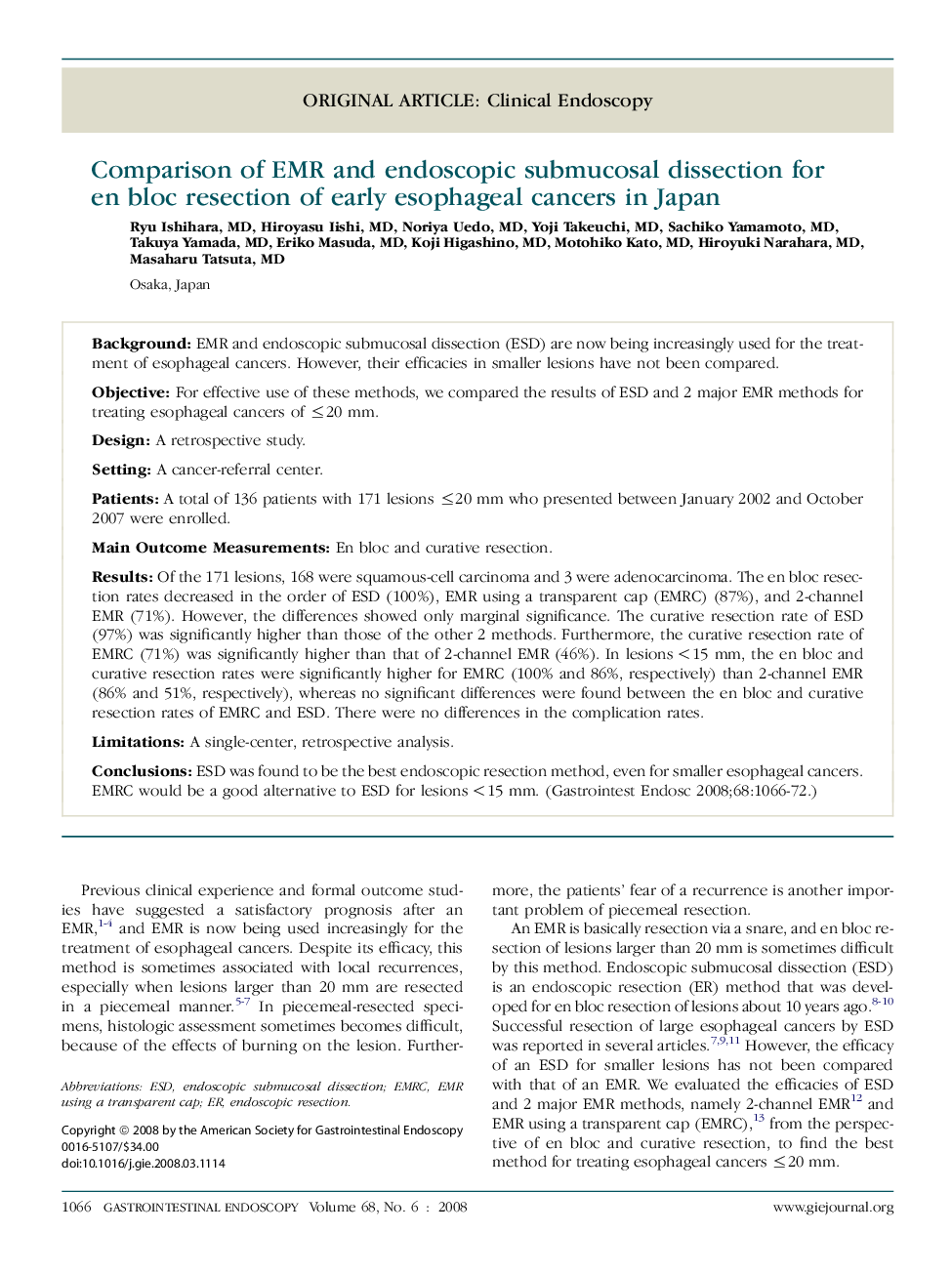| Article ID | Journal | Published Year | Pages | File Type |
|---|---|---|---|---|
| 3308234 | Gastrointestinal Endoscopy | 2008 | 7 Pages |
BackgroundEMR and endoscopic submucosal dissection (ESD) are now being increasingly used for the treatment of esophageal cancers. However, their efficacies in smaller lesions have not been compared.ObjectiveFor effective use of these methods, we compared the results of ESD and 2 major EMR methods for treating esophageal cancers of ≤20 mm.DesignA retrospective study.SettingA cancer-referral center.PatientsA total of 136 patients with 171 lesions ≤20 mm who presented between January 2002 and October 2007 were enrolled.Main Outcome MeasurementsEn bloc and curative resection.ResultsOf the 171 lesions, 168 were squamous-cell carcinoma and 3 were adenocarcinoma. The en bloc resection rates decreased in the order of ESD (100%), EMR using a transparent cap (EMRC) (87%), and 2-channel EMR (71%). However, the differences showed only marginal significance. The curative resection rate of ESD (97%) was significantly higher than those of the other 2 methods. Furthermore, the curative resection rate of EMRC (71%) was significantly higher than that of 2-channel EMR (46%). In lesions <15 mm, the en bloc and curative resection rates were significantly higher for EMRC (100% and 86%, respectively) than 2-channel EMR (86% and 51%, respectively), whereas no significant differences were found between the en bloc and curative resection rates of EMRC and ESD. There were no differences in the complication rates.LimitationsA single-center, retrospective analysis.ConclusionsESD was found to be the best endoscopic resection method, even for smaller esophageal cancers. EMRC would be a good alternative to ESD for lesions <15 mm.
